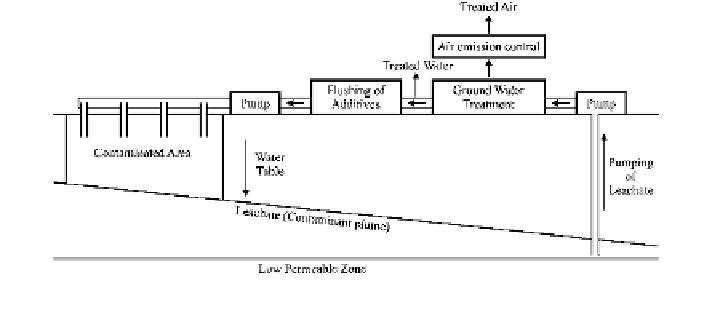Environmental Engineering Reference
In-Depth Information
Fig. 17.2
Schematic representation of soil flushing
flushing is conducted in situ, it reduces the need for excavation, handling or
transportation of hazardous substances (Khan et al.
2004
). More demonstrations
are needed in this methodology, in addition to developing more understanding into
the mechanisms for solution, metal recovery, and use of nontoxic additives.
17.3.5 Dechlorination
Sometimes, reduction reaction can contribute to the decontamination of polluted
soils. Chemical-reductive dechlorination is one such technique. Dechlorination,
also known as dehalogenation, is a chemical technique based on the loss of hal-
ogen atoms (i.e., atoms of chlorine, fluorine, bromine, and iodine) from the hal-
ogenated organic molecules. Thus, converting toxic compounds into less toxic
substances. These substances are frequently soluble in water, thus enhancing their
separation from the soil. This technique applicable to polychlorinated biphenyls
(PCBs), halogenated semivolatile volatile organic compounds, and pesticides
(Castelo-Grande
et al.
2010
).
17.4 Biological Techniques
These techniques use living organisms in order to transform or degrade contam-
inants into less toxic form or remove the toxic contaminants of the soil (Kavamura
and Esposito
2010
). Microorganisms, soil invertebrates, and plants have all been
exploited as potential agents of soil bioremediation, although most treatments have
been based on microbial activity. The strategies can be applied in both in situ or ex
situ ways depending on the contaminant and soil characteristics. Although bio-
logical solutions to inorganic pollution exist, the main emphasis has been on the
treatment of organic compounds.

Search WWH ::

Custom Search